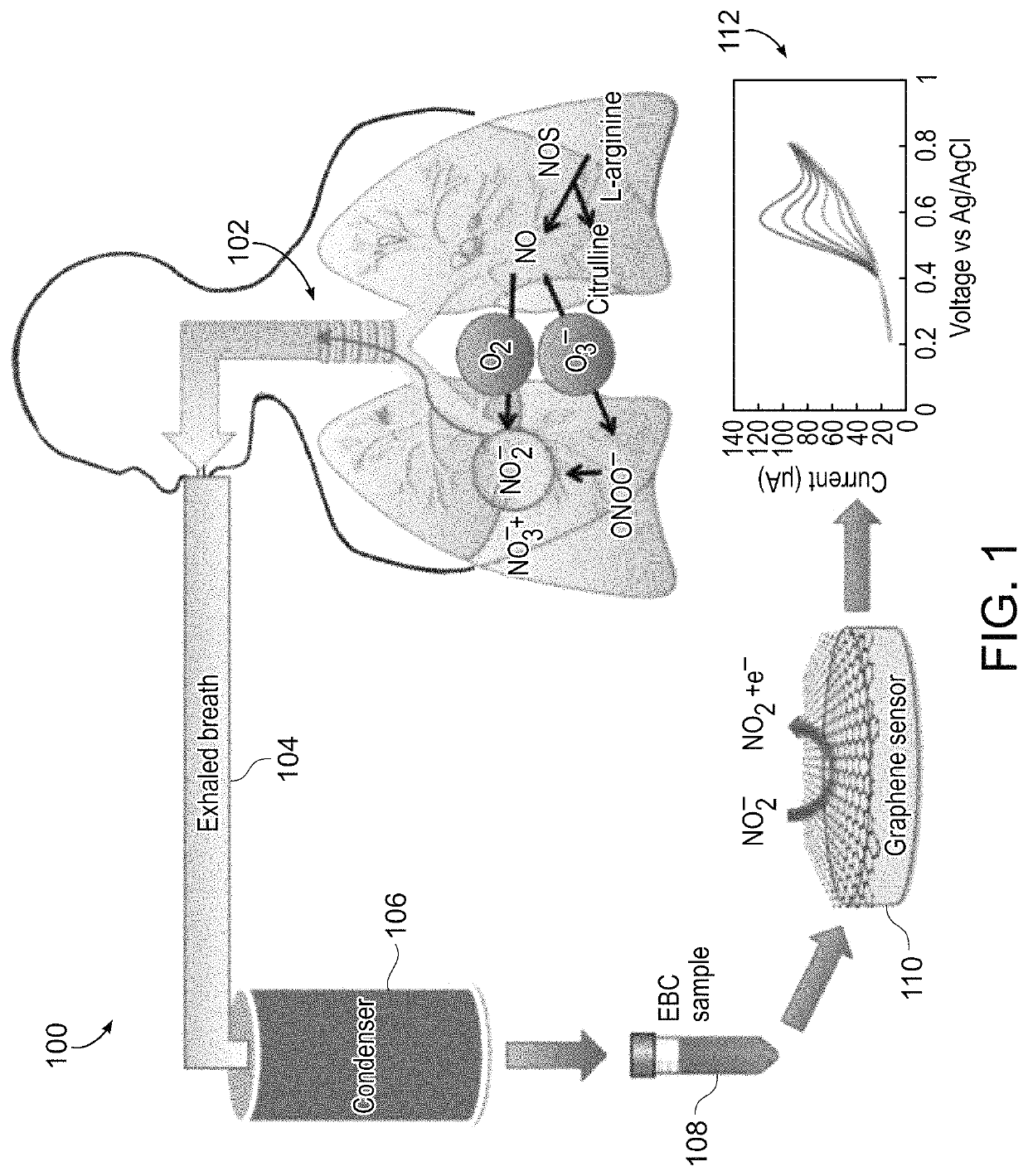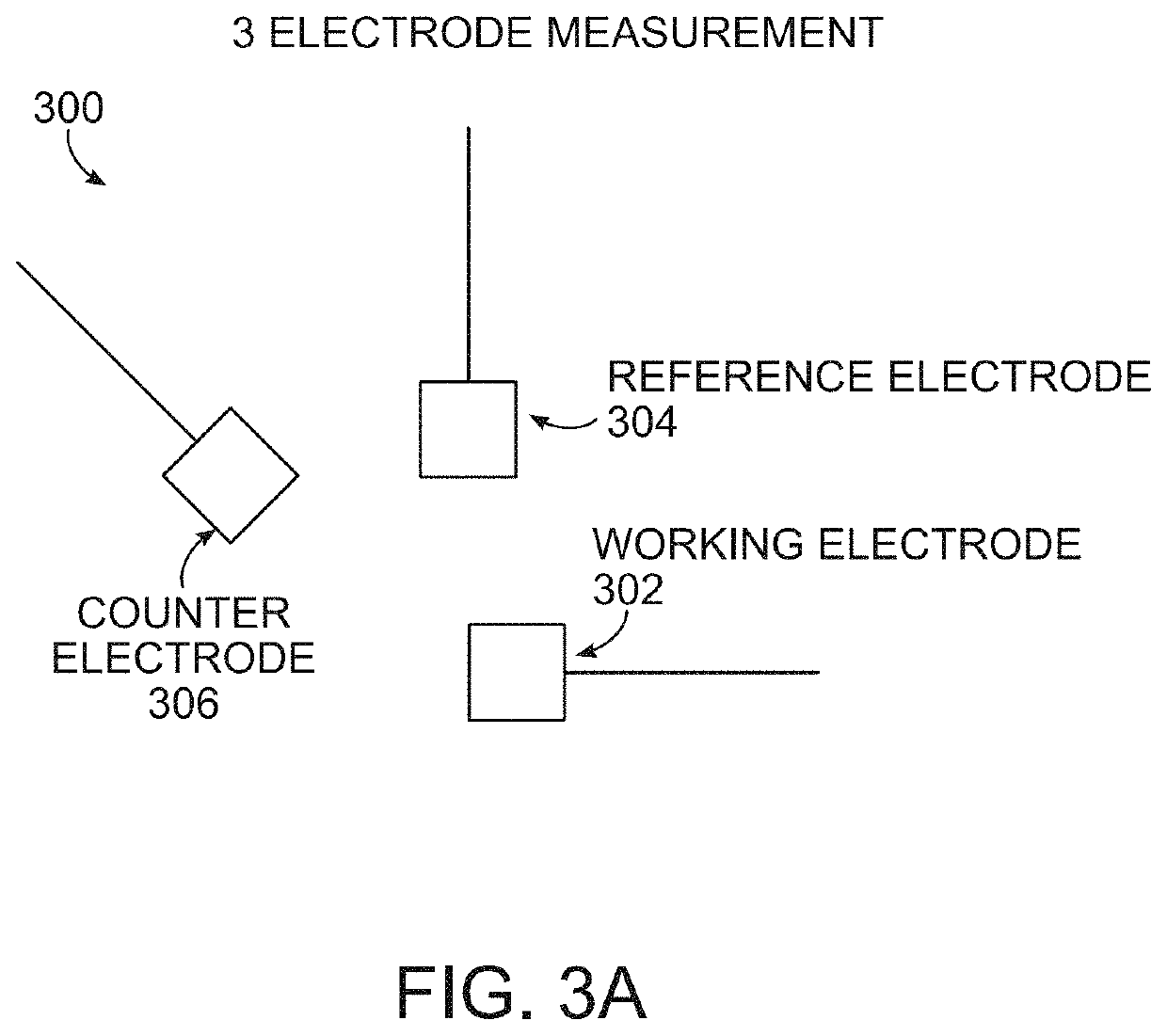Quantification of inflammatory molecules in exhaled breath condensate using differential pulse voltammetry on reduced graphene oxide sensor
a technology of exhaled breath and differential pulse voltammetry, which is applied in the direction of instruments, material electrochemical variables, diagnostic recording/measuring, etc., can solve the problems of low sensitivity of methods, decrease in the amount of nitrite, and inability to carry around, so as to achieve less sensitivity, enhance sensitive, and improve the effect of assay performan
- Summary
- Abstract
- Description
- Claims
- Application Information
AI Technical Summary
Benefits of technology
Problems solved by technology
Method used
Image
Examples
example
[0101]Nanomolar Detection of Respiratory Inflammation Metabolites in Exhaled Breath Condensate Using Reduced Graphene Oxide Sensor: Study Effects of Sample Matrix and Storage
[0102]Presented herein is a sensitive nitrite electrochemical sensor in exhaled breath condensate samples using reduced graphene oxide. Nitrite is one of the important biomarkers in respiratory system that can help monitoring lung inflammation diseases and lung cancer. In addition, we studied the effect of storage and important analytical parameters in electrochemical methods such as electrolyte type, EBC matrix effect and pH. These results can help to develop non-invasive, portable sensor for lung metabolite detection. Moreover, standardization of storage and analytical method can help to introduce this method for reproducible clinical applications
PUM
| Property | Measurement | Unit |
|---|---|---|
| thickness | aaaaa | aaaaa |
| length | aaaaa | aaaaa |
| length | aaaaa | aaaaa |
Abstract
Description
Claims
Application Information
 Login to View More
Login to View More - R&D
- Intellectual Property
- Life Sciences
- Materials
- Tech Scout
- Unparalleled Data Quality
- Higher Quality Content
- 60% Fewer Hallucinations
Browse by: Latest US Patents, China's latest patents, Technical Efficacy Thesaurus, Application Domain, Technology Topic, Popular Technical Reports.
© 2025 PatSnap. All rights reserved.Legal|Privacy policy|Modern Slavery Act Transparency Statement|Sitemap|About US| Contact US: help@patsnap.com



